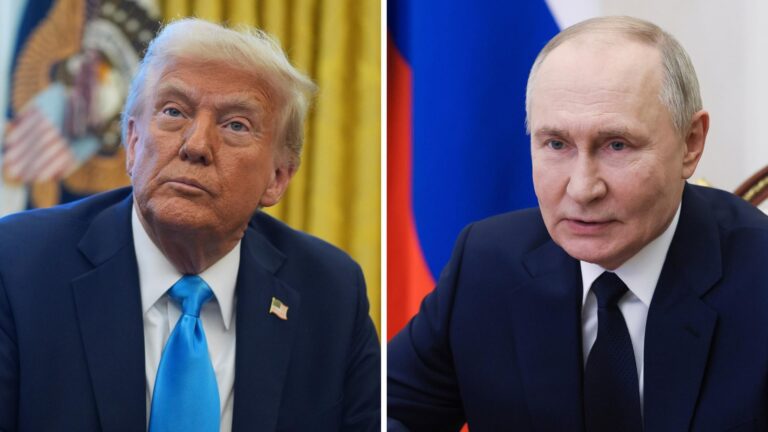In a striking convergence of tactics, former U.S. President Donald Trump’s confrontational stance toward India mirrors the hardline approach long employed by Chinese President Xi Jinping, raising fresh concerns about the evolving dynamics of global diplomacy. According to a recent Bloomberg analysis, Trump’s aggressive pressure on New Delhi reflects strategic methods that echo Beijing’s playbook, signaling a shift in how international influence and coercion are exercised on the world stage. This development not only underscores the complexities of U.S.-India relations under Trump’s administration but also highlights the broader geopolitical contest shaping Asia’s future.
Trump’s Aggressive Tactics Mirror China’s Strategic Pressure on India
In recent months, the pressure exerted by the Trump administration on India has displayed striking similarities to the strategic maneuvers long employed by Beijing. Both leaders have leveraged economic and diplomatic tactics to bend India to their respective wills, often bypassing traditional channels of negotiation. Trump’s approach, marked by aggressive tariff impositions and robust rhetoric, echoes China’s pattern of leveraging trade restrictions and border posturing to secure geopolitical advantages.
Key elements of these tactics include:
- Economic Leverage: Utilizing tariffs and trade barriers to coerce policy changes.
- Geopolitical Posturing: Strengthening military presence near contested borders.
- Diplomatic Isolation: Straining multilateral ties to create dependency.
- Information Campaigns: Influencing public perception through strategic messaging.
| Method | China’s Usage | Trump’s Approach |
|---|---|---|
| Tariff Imposition | Targeted Indian goods to enforce border compliance | Levied heavy tariffs on Indian steel and aluminum |
| Military Posturing | Massive troop build-up along LAC | Publicly supporting India’s rivals in diplomatic forums |
| Diplomatic Pressure | Encouraged Nepal and Pakistan’s border claims | Questioned India’s policies in trade negotiations |
Analyzing the Impact of US-India Relations Under Trump’s Coercive Approach
During his tenure, former President Donald Trump’s diplomatic tactics often mirrored the hardline strategies attributed to Chinese President Xi Jinping, particularly in dealing with key allies such as India. His administration’s coercive approach-ranging from trade tariffs to public diplomatic pressure-sought to bend India’s strategic decisions to align more closely with U.S. interests, often at the expense of mutual cooperation. This approach strained the longstanding partnership between the two democracies, challenging established trade agreements and defense collaborations while also testing India’s autonomy in navigating its geopolitical stance.
Key areas impacted under this coercive dynamic included:
- Trade Imbalances: Tariffs imposed on Indian exports led to retaliation and disruption in bilateral commerce.
- Defense Agreements: Pressure on India to limit engagement with Russia, complicating military procurement.
- Technology Transfer: Heightened scrutiny and restrictions on Indian tech companies tied to security concerns.
| Sector | Trump Era Impact | India’s Response |
|---|---|---|
| Trade | Increased tariffs on steel and aluminum | Filed WTO complaints; sought new trade partners |
| Defense | Warning against Russian arms deals | Balanced purchases; reinforced strategic autonomy |
| Technology | Restrictions on Huawei and ZTE alliances | Accelerated indigenous tech development |
Strategic Recommendations for India to Navigate Dual Pressures from Washington and Beijing
India must adopt a calibrated foreign policy that preserves its sovereignty while engaging pragmatically with both Washington and Beijing. This involves leveraging strategic autonomy by diversifying diplomatic and economic partnerships beyond the traditional power centers. Strengthening ties with regional neighbors, enhancing multilateral engagements within frameworks like BRICS and the Shanghai Cooperation Organization, and expanding trade with the Global South can mitigate overdependence on either superpower. Simultaneously, India should prioritize bolstering indigenous technological capabilities and defense preparedness to withstand coercive tactics that echo the bullying seen in U.S. and Chinese playbooks.
Domestically, a robust response to external pressures requires cohesive policymaking and investment in critical infrastructure. The government needs to promote sectors such as semiconductors, 5G, and artificial intelligence to reduce vulnerabilities exploited by external actors. Below is a brief overview of key strategic focus areas:
| Strategic Area | Action Point | Expected Outcome |
|---|---|---|
| Economic Diversification | Expand trade partnerships with ASEAN & Africa | Reduced reliance on China and U.S. |
| Defense Modernization | Increase domestic arms production | Enhanced security autonomy |
| Technology Development | Invest in R&D for emerging tech sectors | Competitive edge in global markets |
- Maintain strategic ambiguity: Avoid overt alignment to keep diplomatic leverage.
- Fortify digital infrastructure: Enhance cybersecurity to counter hybrid threats.
- Encourage people-to-people ties: Cultivate cultural and academic exchanges.
Future Outlook
As tensions between the U.S. and India continue to simmer, the parallels between President Trump’s confrontational tactics and those historically employed by Xi Jinping underscore a broader shift in global diplomatic norms. Understanding these strategies is crucial for policymakers seeking to navigate an increasingly complex geopolitical landscape where traditional alliances and rivalries are being reshaped. The unfolding dynamics between these major powers will undoubtedly have lasting implications for international relations in the years ahead.




